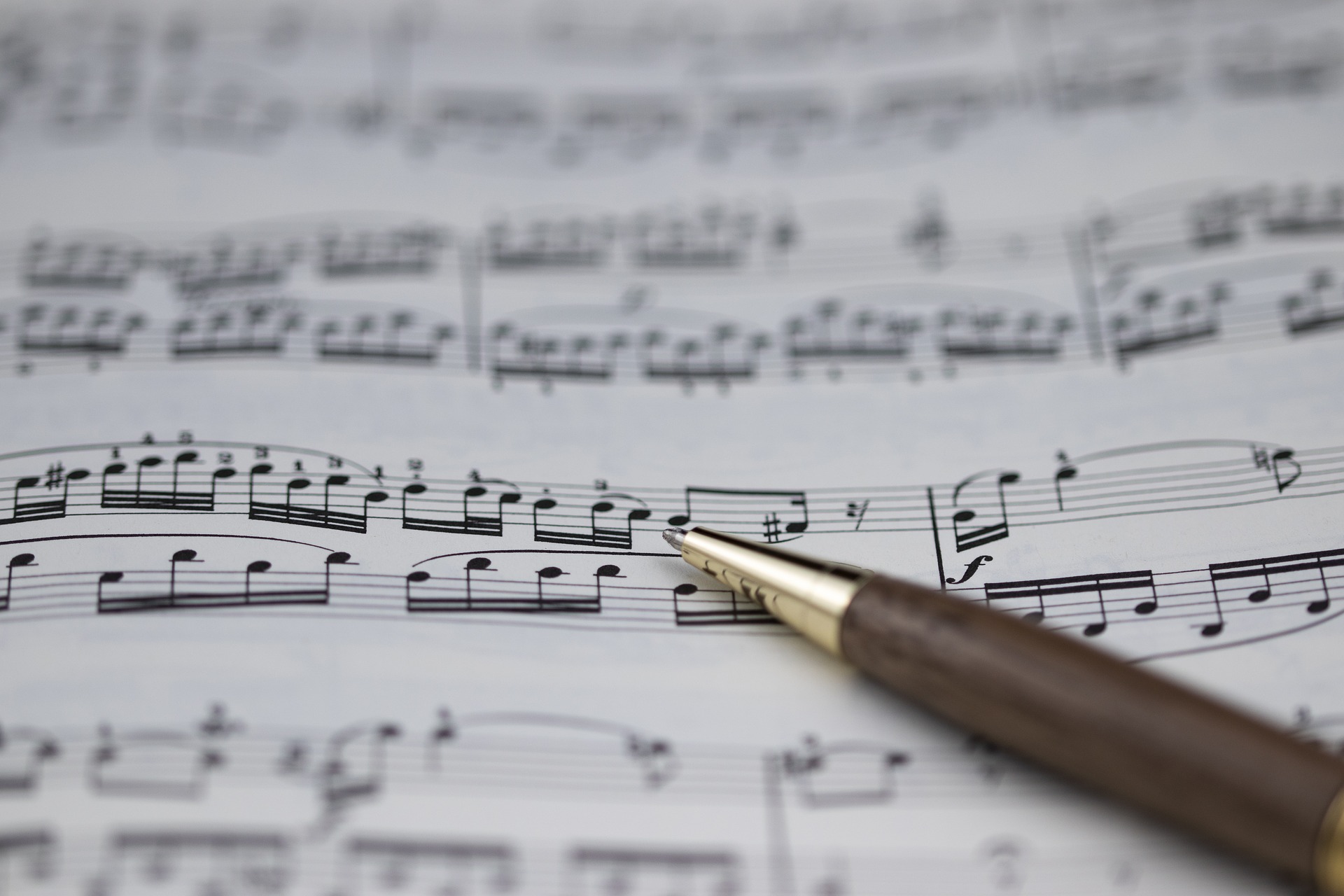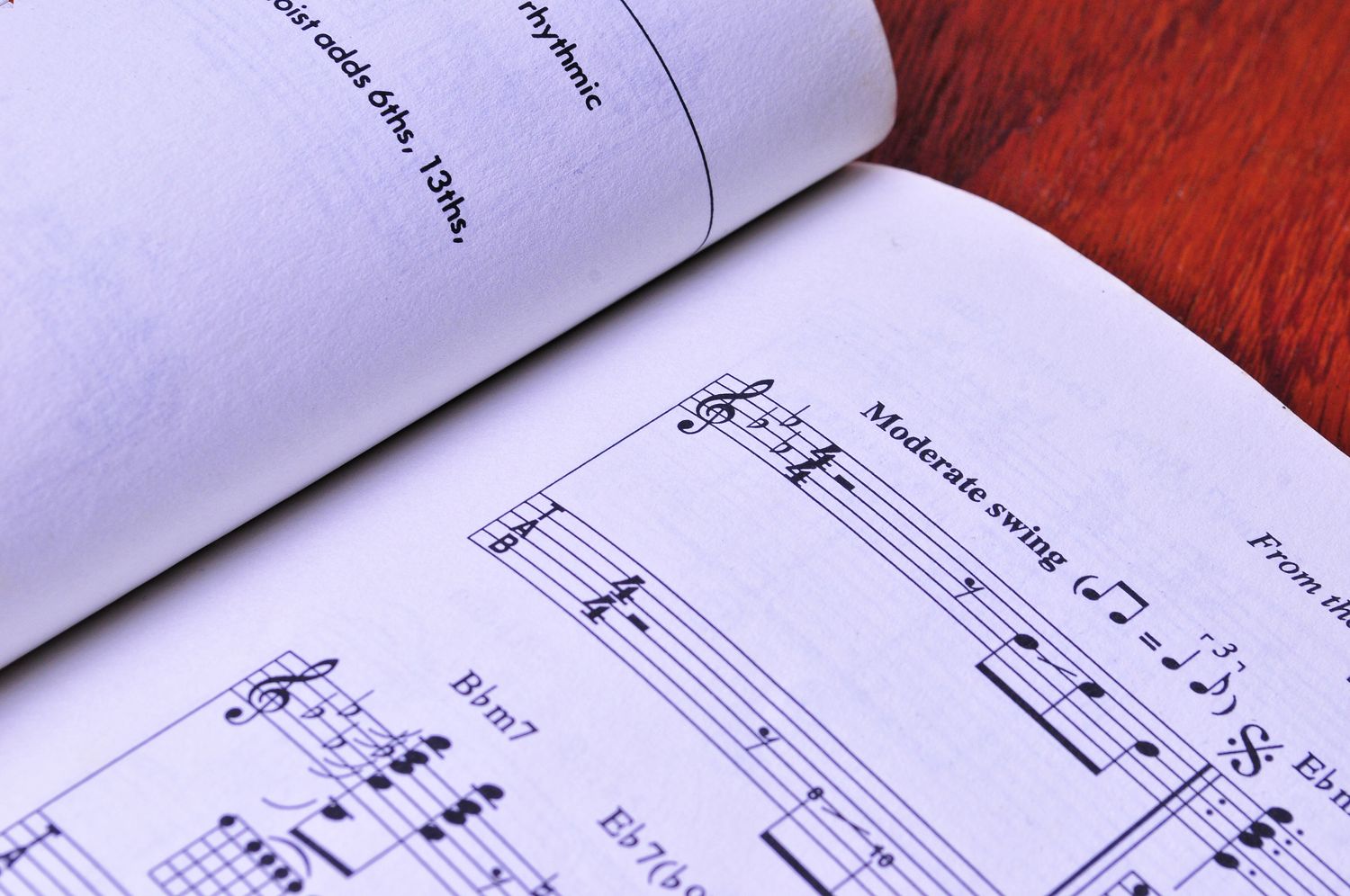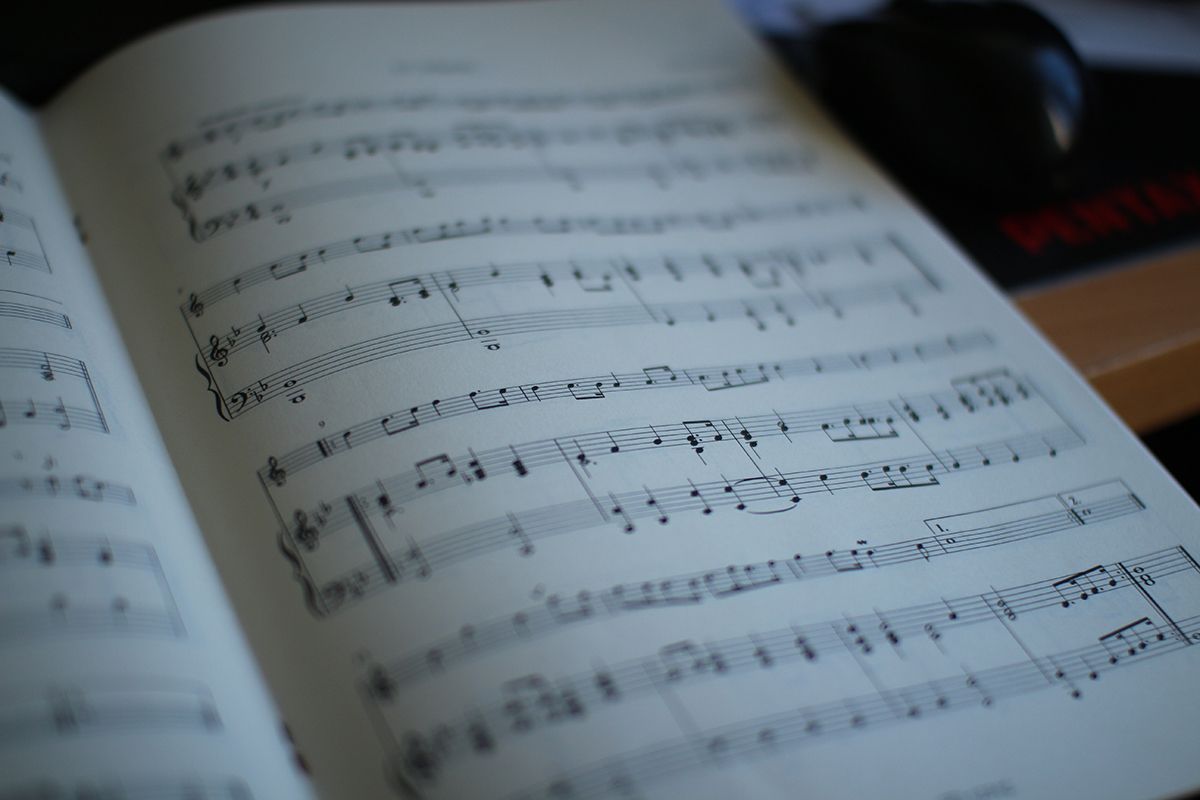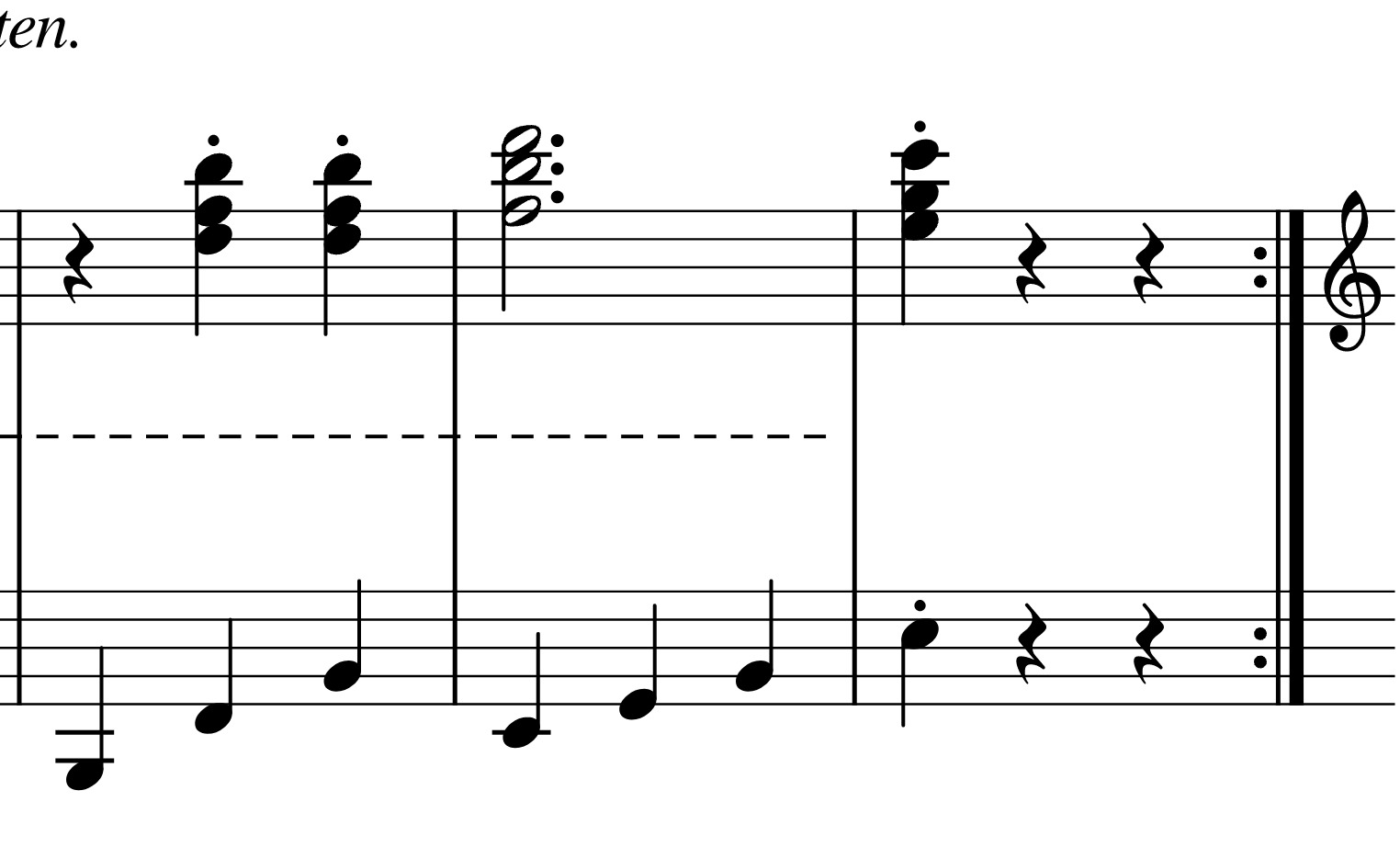Home>Production & Technology>Music Theory>Music Theory What Is Melody


Music Theory
Music Theory What Is Melody
Modified: January 31, 2024
Discover the essence of melody in music theory. Uncover the secrets of creating captivating tunes through the exploration of fundamental musical concepts and techniques.
(Many of the links in this article redirect to a specific reviewed product. Your purchase of these products through affiliate links helps to generate commission for AudioLover.com, at no extra cost. Learn more)
Table of Contents
Introduction
Music theory is an essential component of understanding and appreciating music. It provides the foundation for musicians to create, analyze, and communicate their musical ideas effectively. One of the fundamental concepts in music theory is melody, which is often considered the heart and soul of a musical composition. Melody is what captures our attention, evokes emotions, and leaves a lasting impression.
In its simplest form, melody refers to a sequence of notes played or sung in succession. It is the element of music that we often hum or whistle along to. However, melody encompasses much more than just a series of pitches. It involves the careful combination of pitch, duration, rhythm, contour, and other musical elements to create a cohesive and compelling musical line.
In this article, we delve into the world of melody, exploring its definition, elements, and significance in music. Whether you are a budding musician, a music enthusiast, or simply curious about the inner workings of music, this article will serve as a guide to understanding the fascinating realm of melody.
Definition of Melody
Melody can be defined as a succession of musical tones that are organized in a rhythmic and coherent manner. It is the lead or main theme of a piece of music that carries the melodic line and often serves as the focal point of the composition. Melody is what we sing along to, whistle in our heads, and recognize as the catchy part of a song.
At its core, melody is a combination of pitch, duration, and rhythm. Pitch refers to the perceived frequency of a sound and determines whether a note is high or low. Duration refers to the length or time value of each note, while rhythm refers to how the notes are grouped and organized in time.
Melody is also characterized by its contour, which refers to the ascending, descending, or undulating shape that the notes create when played consecutively. This contour gives the melody its unique character and adds to its expressiveness and emotional impact.
While melodies can be simple or complex, they are typically made up of a series of smaller musical phrases or motifs. These motifs are repeated, varied, and developed throughout the course of the melody to create a sense of structure, cohesion, and progression.
Furthermore, melody is often influenced by the key and scale of a composition. The key determines the tonal center of the piece, while the scale provides the set of notes that form the foundation for the melody. These factors contribute to the melodic structure and the overall mood and tonality of the music.
In essence, melody is the essence of a musical piece that captivates our ears. It is the driving force that guides us through the emotional journey of a composition, making it a crucial element in music theory and composition.
Elements of Melody
A melody is made up of several essential elements that work together to create a coherent and memorable musical line. Understanding these elements is crucial for composing, analyzing, and appreciating melodic phrases. Let’s explore the key elements that contribute to the creation of a compelling melody.
- Pitch: Pitch is the most basic element of melody. It refers to the perceived highness or lowness of a sound. In Western music, pitches are typically represented by individual notes on the musical staff, with higher pitches placed higher on the staff and lower pitches placed lower. The arrangement and sequence of these pitches form the melodic line.
- Duration: In addition to pitch, duration plays a crucial role in melodic construction. Duration refers to the length or time value of each note. It determines how long each pitch is held or sustained in relation to the others. By varying the duration of notes, composers can create a sense of rhythm, syncopation, and tension within the melody.
- Rhythm: Rhythm refers to the pattern of durations and accents within a melody. It is the temporal organization of the notes, rests, and other rhythmic elements. The rhythm gives the melody its unique groove and sense of forward motion. Different rhythmic patterns and syncopations can evoke different emotions and add interest to the melodic line.
- Contour: The contour of a melody refers to the shape or trajectory of the pitch sequence. It describes whether the melody moves upward (ascending), downward (descending), or stays on the same pitch level (static). The contour gives the melody its distinctive character and can evoke different moods and emotions. A melody with a rising contour often feels uplifting and optimistic, while a descending contour may evoke a sense of melancholy or introspection.
- Scale and Key: The scale and key of a composition influence the notes that are used in the melody. A scale is a set of notes arranged in ascending or descending order, while the key establishes the tonal center of the composition. The choice of scale and key can significantly impact the mood, tonality, and character of the melody.
By understanding and manipulating these elements, composers can craft melodies that engage listeners and convey their artistic vision. Whether composing a catchy pop tune or a complex classical masterpiece, the mastery of these elements is fundamental in creating a memorable and impactful melodic line.
Pitch
Pitch is a fundamental element of melody that determines the perceived frequency of a sound. It is what allows us to distinguish between high and low sounds in music. Pitch is represented by individual notes on the musical staff, with higher pitches placed higher on the staff and lower pitches placed lower.
In Western music, pitch is typically measured using a system called equal temperament, where the octave is divided into twelve equal intervals called semitones. Each semitone represents a specific pitch, such as C, C#, D, D#, and so on. These pitches can be played on various musical instruments or produced by the human voice.
Melodies are created by arranging pitches in a particular sequence. The sequence of pitches, known as a melodic line, is what gives a melody its distinctive character and memorable qualities. Composers carefully choose and combine different pitches to create a melodic contour that evokes specific emotions or communicates a musical idea.
The relationship between pitches in a melody can also create tension and resolution. Dissonant intervals, characterized by pitches that clash or sound tense, can create a sense of anticipation or unease. On the other hand, consonant intervals, characterized by pitches that harmonize or sound stable, provide a feeling of resolution and satisfaction.
It’s important to note that pitch can be manipulated in various ways within a melody. Melodies can move stepwise, with adjacent pitches following each other in a gradual progression. They can also leap, with larger intervals between pitches, creating a more dynamic and expressive melodic line.
Furthermore, the choice of pitch can vary depending on the scale and key of the composition. Different scales, such as major or minor scales, have their specific arrangements of pitches, altering the overall character of the melody. The key of the composition establishes the tonal center, influencing the selection and organization of pitches within the melody.
Pitch is an essential element in melodic construction, allowing musicians to convey emotions, messages, and artistic expression. By skillfully manipulating pitch, composers can create melodies that captivate listeners, evoke emotional responses, and leave a lasting impression.
Duration
Duration is a vital element in the construction of a melody. It refers to the length or time value of each note within the melodic line. By manipulating the duration of notes, composers can create a sense of rhythm, pacing, and tension in the melody.
In musical notation, the duration of a note is represented by various symbols, such as whole notes, half notes, quarter notes, eighth notes, and so on. Each symbol corresponds to a specific length of time that the note should be held. For example, a whole note is held for four beats, while a half note is held for two beats.
The pattern and arrangement of different durations in a melody contribute to its overall rhythm. Rhythm is the temporal organization of the notes, rests, and other rhythmic elements in a piece of music. It determines the groove, flow, and energy of the melody. By combining notes of different durations, composers can create syncopations, accents, and rhythmic patterns that add interest and complexity to the melodic line.
The choice of duration also affects the interpretation of the melody. Longer notes create a sense of sustained or held tones, adding a sense of stability and calm. Shorter notes, on the other hand, create a faster-paced and more active melody. The interplay between longer and shorter notes shapes the dynamics and overall feel of the melodic line.
Furthermore, the duration of a note can also convey expressive elements in a melody. Composers often use varying durations to create tension, release, and rhythmic patterns that enhance the emotional impact of the music. Syncopated rhythms, for instance, can add a sense of surprise or anticipation, while sustained notes can create a sense of longing or contemplation.
It’s also worth noting that the duration of a note can be altered through techniques such as staccato (short and detached) or legato (smooth and connected) playing. These articulations affect the perceived length and emphasis of the note, further shaping the rhythmic and expressive qualities of the melody.
Duration plays a crucial role in the overall structure and interpretation of a melody. By carefully considering the length and arrangement of notes, composers can create melodies that engage the listener, convey emotions, and leave a lasting impression. The manipulation of duration adds depth, dimension, and rhythm to the melodic line, making it a crucial element in the art of musical composition.
Rhythm
Rhythm is a fundamental element of music that brings a melody to life. It refers to the pattern of durations and accents within the melody, giving it its unique groove, flow, and forward motion. Rhythm plays a crucial role in establishing the pace, energy, and overall feel of a melodic line.
In a melody, rhythm is created through the arrangement and organization of notes, rests, and other rhythmic elements. Different note durations, represented by symbols such as whole notes, half notes, quarter notes, and so on, determine the length of time each note is played. Rests indicate moments of silence within the melody, adding further complexity to the rhythmic structure.
The pattern of strong and weak beats, known as accents, also contributes to the rhythm of a melody. Accents can emphasize certain notes or beats, creating a sense of emphasis, syncopation, and contrast. The placement of accents within the melody can affect its overall groove and feel.
Rhythm provides the framework and pulse that drives a melody forward. It establishes a sense of tempo, or speed, for the music. A fast-paced rhythm creates an energetic and dynamic melody, while a slow and steady rhythm evokes a more relaxed and tranquil mood. Additionally, the rhythmic pattern can influence the emotional impact and character of the melody.
Empty space or pauses, created by rests, also play a significant role in rhythm. These moments of silence can add tension, anticipation, or create a sense of release when the melody resumes. The strategic use of rests in a melody can enhance its rhythmic complexity and captivate the listener’s attention.
Furthermore, rhythm often intertwines with other elements of music, such as melody, harmony, and lyrics. It interacts with these elements, creating a cohesive musical composition. The rhythmic pattern of a melody can complement the lyrics, enhance the emotions conveyed by the melody, and provide a sense of unity to the overall musical piece.
It’s important to note that rhythm is not confined to a specific genre or style of music. It is an integral part of all musical traditions, from classical to jazz, from rock to hip-hop. Each genre or style has its unique rhythmic characteristics, contributing to the distinctiveness and appeal of the music.
In summary, rhythm is a fundamental element in creating a compelling and engaging melody. It shapes the pace, groove, and overall feel of the music. By skillfully manipulating rhythm, composers can create melodies that are rhythmically dynamic, emotionally impactful, and memorable to the listener.
Contour
The contour of a melody refers to the shape or trajectory of the pitch sequence within the melodic line. It describes how the melody moves, whether it ascends, descends, or remains on the same pitch level. The contour of a melody is essential as it gives the melodic line its unique character, expressiveness, and emotional impact.
A melody with an ascending contour moves in a rising direction, with each successive note being higher in pitch than the previous one. An ascending contour often conveys a sense of upliftment, optimism, and progression. It can create a feeling of building tension or anticipation, leading to a satisfying resolution.
In contrast, a descending contour moves in a falling direction, with each successive note being lower in pitch. A descending contour often evokes a sense of melancholy, introspection, or resolution. It can convey a feeling of release or closure, grounding the melodic line and providing a sense of stability.
A melody with a static contour stays on the same pitch level, with minimal or no movement in either direction. This type of contour can create a sense of repetition, stillness, or introspection. It can be contemplative, drawing the listener’s attention to the subtleties and nuances of the melodic line.
Furthermore, the contour of a melody can vary within a composition, changing dynamically to add depth and interest. A melody might start with a descending contour, then transition to an ascending contour, or vice versa. These variations in contour create contrast, tension, and release within the melody, enhancing its expressiveness and engaging the listener’s attention.
The contour of a melody is closely related to the emotional impact it has on the listener. It can evoke a wide range of emotions, from joy and excitement to nostalgia and tranquility, depending on the musical context and the composer’s intent. A melodic line with a well-crafted contour can communicate and evoke feelings, connecting with the listener on a deeper level.
It’s important to note that the contour of a melody is not solely determined by the direction of the pitch movement. It also depends on factors such as the range of the melody, the intervals between pitches, and the overall rhythmic pattern. These elements work together to create a cohesive and expressive melodic line.
In summary, the contour of a melody shapes its unique character, expressiveness, and emotional impact. Whether ascending, descending, or staying static, the contour adds depth and interest to the melodic line. By skillfully manipulating the contour, composers can create melodies that resonate with the listener, capturing their attention and evoking a wide range of emotions.
Scale and Key
Scale and key are two interconnected elements that significantly influence the construction and tonal character of a melody. They provide the foundation for selecting and organizing the pitches used in a composition, giving the melody its distinct tonality, mood, and musical identity.
A scale is a set of musical notes arranged in ascending or descending order. It provides a pool of pitches from which composers draw to create melodies. Western music commonly employs scales such as the major scale, minor scale, pentatonic scale, and chromatic scale. Each scale has its unique pattern of whole steps and half steps, determining the specific arrangement of pitches within it.
The key of a composition establishes the tonal center or home pitch. It is the pitch around which the melody and harmony revolve. The key sets the overall tonality and mood of the music, influencing how the melody is constructed and perceived by the listener. The most common keys in Western music are major and minor keys, each characterized by its specific arrangement of whole steps and half steps.
When composing a melody, musicians often select pitches from the scale that corresponds to the key of the composition. This ensures that the melodic line fits harmoniously within the tonal framework. The choice of scales and keys allows composers to explore different tonalities and create melodies with varying emotional qualities.
For example, a melody in a major key tends to sound bright, joyful, and uplifting. This is because major keys are built on whole steps and half steps that create a particular pattern of intervals. On the other hand, a melody in a minor key often evokes a more melancholic, introspective, or mysterious mood. The intervals in a minor scale give the melody a distinct tonality and emotional impact.
The scale and key can also influence the melodic structure and phrases within a composition. Melodies often start and end on the home pitch, creating a sense of resolution and stability. Furthermore, composers may use scale patterns and motifs to develop and vary the melodic line, adding depth, cohesion, and interest to the music.
It is worth noting that musicians are not limited to using only the pitches within a specific scale or key. They can incorporate chromatic notes, which are outside the key, to add tension, color, and chromaticism to the melody. This bending of the rules can create unique melodic moments and unexpected twists within the composition.
In summary, scale and key are vital elements in melodic composition. They provide the framework and tonal context for selecting and organizing pitches within a melody. The choice of scale and key influences the tonality, mood, and emotional impact of the melody, allowing composers to evoke specific feelings and create melodies that resonate with listeners.
Melodic Motifs
Melodic motifs play a significant role in shaping the structure and development of a melody. A motif is a small melodic or rhythmic idea that serves as a building block for creating a larger musical composition. It is a recurring element that adds cohesion, variety, and interest to the melodic line.
Motifs are often short and distinctive phrases, typically consisting of just a few notes. They can be melodic patterns, rhythmic figures, or a combination of both. Composers use motifs to create melodic hooks, memorable melodies, and thematic material that defines the character of a musical piece.
Motifs can be repeated, varied, and developed throughout the course of a melody. By repeating a motif, composers create a sense of familiarity and establish a melodic identity. Variation techniques, such as altering the rhythm, changing the contour, or transposing the motif to a different key, add interest and complexity to the melody. Motif development involves expanding upon the main theme, exploring new melodic ideas, and creating musical tension and release.
Motifs can also contribute to the overall structure of a melody. They may appear at different points in the music, serving as markers or points of reference. Motifs can be used to create musical dialogue between different instruments or sections of an ensemble, enhancing the interplay and development of the melodic line.
Furthermore, motifs can be used thematically to convey specific emotions, characters, or ideas in a musical composition. A recurring motif can represent a particular character in a film score, evoke a specific mood in a song, or serve as a musical symbol for a concept or story.
Melodic motifs can range from simple and catchy to complex and intricate, depending on the musical style and intent. They can be heard in various genres, from classical compositions to popular songs. Motifs are not limited to any particular instrument or voice; they can be created and explored by any musician or composer.
An iconic example of a melodic motif is Ludwig van Beethoven’s Fifth Symphony, which begins with four short notes: “dun-dun-dun-duuun.” This simple yet powerful motif recurs throughout the piece, constantly transforming and developing, becoming synonymous with the symphony itself.
In summary, melodic motifs are small musical ideas that play a vital role in shaping the structure, development, and identity of a melody. They add cohesion, variation, and thematic material to a composition, creating memorable and engaging musical experiences for listeners. Whether through repetition, variation, or development, motifs contribute significantly to the evolution and impact of a melody.
Harmony and Melody
Harmony and melody are two interconnected elements in music that work together to create a rich and captivating musical experience. While melody refers to the sequence of notes played or sung in succession, harmony involves the simultaneous sounding of multiple notes to create chords and create a harmonious accompaniment to the melody.
In a musical composition, harmony provides the foundation upon which the melody is built. Harmonies are created by combining different pitches, often in the form of chords, that support and enhance the melodic line. The interaction between melody and harmony is what gives a piece of music its depth, color, and emotional impact.
Harmonies can complement and support the melody by providing a harmonic framework within which the melodic line can unfold. Chords are carefully chosen to create tension, release, and resolution, highlighting the emotional journey of the melody. The harmonic progression can enhance the expressiveness of the melody, evoking different moods and feelings as the music unfolds.
Conversely, the melody can shape and influence the harmony. The choice of pitches and melodic contour can determine the chords and harmonic progressions used in a composition. Composers often select harmonies that complement and enhance the melodic line, creating a seamless and cohesive musical experience for the listener.
Harmonies can also play a supporting role in a melody, providing a backdrop for the melodic line to shine. This can be seen in genres such as jazz, where the harmony often provides a rich and complex harmonic landscape for improvisation and melodic exploration.
Additionally, the use of harmony can create contrast and interest within a melody. Dynamic shifts in harmonies can evoke tension or highlight certain moments of the melody, adding emotional impact and capturing the listener’s attention. Modulations, or key changes, can also introduce new harmonies and tonalities, creating a sense of progression and development within the melody.
Harmony and melody are intricately connected, working together to create a harmonious and expressive musical composition. They interact and shape each other, creating a complex yet unified musical experience. A well-crafted harmony complements and supports the melodic line, while the melody gives life and purpose to the harmonies. Together, they create a musical journey that captivates listeners and leaves a lasting impression.
Importance of Melody in Music
Melody is arguably the most significant element in music, as it has the power to capture our attention, evoke emotions, and leave a lasting imprint on our minds. It serves as the centerpiece of a musical composition, providing a melodic line that carries the main theme and engages the listener’s senses.
One of the primary functions of melody is to create a memorable and recognizable musical identity. We often find ourselves humming or singing along to the melody of a favorite song, showcasing its power to connect with us on a personal level. Melodies have the ability to evoke a wide range of emotions, from joy and excitement to sadness and introspection, conveying messages and stories in a way that words alone cannot.
Melodies also provide structure and coherence to a musical piece. They act as a guiding force, shaping the overall form and development of the composition. Through repetition, variation, and development, melodies create a sense of progression and unity, tying together different sections and motifs within a piece of music.
In addition to their musical role, melodies play a crucial role in various aspects of culture and society. They serve as a means of communication, capturing the essence of cultural traditions, histories, and identities. Melodies can reflect the spirit of a particular era or evoke a sense of national pride, forging a strong connection between music and society.
With its ability to transcend language barriers, melodies have the power to bring people together and foster a sense of unity. They can be shared, adapted, and interpreted by musicians and listeners from diverse backgrounds, forging connections and fostering a universal appreciation for music.
Moreover, melodies can stimulate the imagination and creativity. They inspire composers, songwriters, and performers to explore different musical possibilities and push the boundaries of their art. Melodies serve as a starting point for improvisation, allowing musicians to express their individuality and create unique interpretations of familiar tunes.
Melody serves as the foundation for the development of other musical elements such as harmony, rhythm, and texture. It interacts with these elements, influencing their structure, complexity, and emotional impact. The interplay between melody and harmonies creates a rich tonal palette, while the rhythm provides the pulse and energy that drives the melodic line forward.
In summary, melody holds a central place in music, being essential for creating memorable and emotionally engaging compositions. It provides structure, coherence, and unity to musical pieces while also serving as a means of communication and cultural expression. Melodies have the power to evoke emotions, bring people together, and inspire creativity. As such, they play a vital role in shaping the musical landscape and have a profound impact on our lives and culture.
Conclusion
Music theory reveals the intricate world of melody, providing a deeper understanding of how it captivates our hearts and minds. Melody, as the essence of a musical composition, is developed through pitch, rhythm, duration, contour, and its interaction with harmony. It evokes emotions, tells stories, and shapes our perception of music.
Understanding the elements of melody allows composers to create captivating musical lines that resonate with listeners. Pitch selection and contour determine the mood and character of a melody, while duration and rhythm establish the pace and groove. The interplay between harmony and melody creates depth, tension, and resolution within a composition.
The significance of melody extends beyond its musical properties. It serves as a form of communication, conveying thoughts, emotions, and cultural narratives. Melodies have a universal language that transcends boundaries, bringing people together and fostering a sense of connection and unity.
As we explore the world of melody, we discover its immense power to evoke emotions, ignite imaginations, and shape our experiences with music. Whether it accompanies lyrics or stands alone, a melody has the ability to leave a lasting impression, creating a musical identity that resonates with us on a personal level.
In conclusion, melody is the heart and soul of music. It is the driving force that captures our attention, evokes emotions, and creates memorable musical experiences. By understanding its elements and significance, we gain a deeper appreciation for the intricate artistry and transformative power of melody. Whether listening, composing, or performing, melody is a powerful tool that connects us to the beauty and essence of music.











